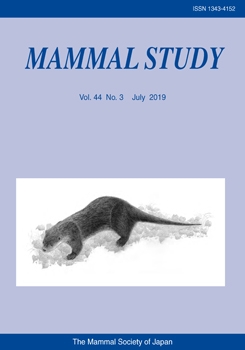Dental microwear texture analysis (DMTA) can be used to quantitatively evaluate tooth surface roughness and has been used to distinguish herbivorous ungulates according to interspecific dietary differences among grazers, browsers, and mixed feeders. Moreover, DMTA has been applied among local populations with intraspecific dietary variation. In general, the tooth surfaces of grazing species/populations are rough, whereas those of browsing species/populations are smooth. Whether DMTA can be used to detect dietary differences among sympatric species is of interest. In the present study, we aimed to use DMTA to explore interspecific differences in diet between two ruminants in Japan—the sika deer and Japanese serow in Nagano Prefecture. We found significant differences in surface roughness parameters between deer and serow. The tooth surfaces of the deer were more undulated with parallel scratches, whereas those of the serow were smoother with pits. These results indicate that the deer consumed abrasive graminoids more frequently than the serow, which is in accordance with previous dietary analyses. However, the two species did not segregate dichotomously but showed a huge overlap in DMTA parameters, implying dietary overlap. The present study shows the potential of DMTA to clarify the foraging ecology of sympatric ruminants from skeletal specimens.
How to translate text using browser tools
5 June 2019
Dental Microwear Texture Analysis in Two Ruminants, Japanese Serow (Capricornis crispus) and Sika Deer (Cervus nippon), from Central Japan
Konoka Aiba,
Shingo Miura,
Mugino O. Kubo
ACCESS THE FULL ARTICLE

Mammal Study
Vol. 44 • No. 3
July 2019
Vol. 44 • No. 3
July 2019
confocal microscopy
dietary overlap
ISO 25178
tooth
ungulates




